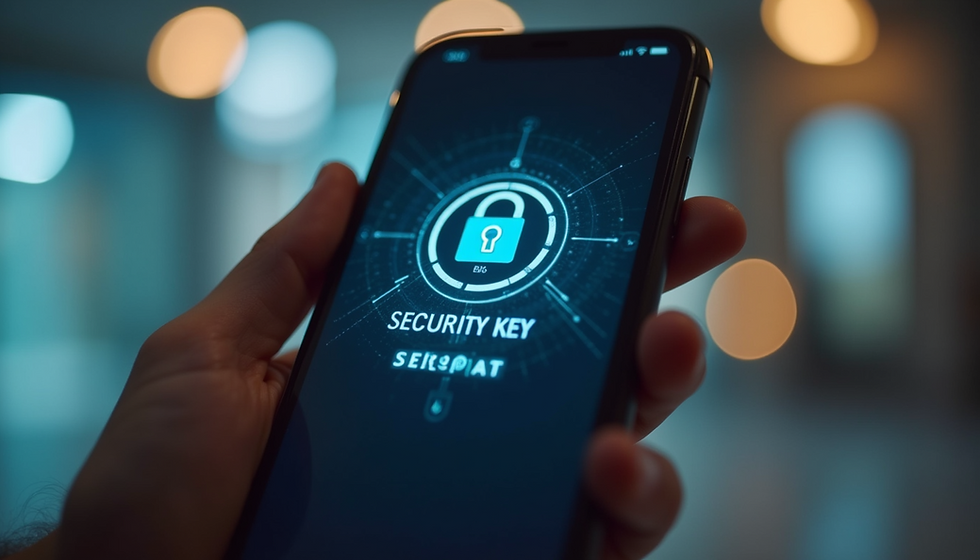Discover Advanced Biometric Authentication Methods
- tech012
- Sep 29
- 3 min read
Security is evolving fast. Passwords alone no longer cut it. They are often weak, reused, or stolen. That’s why I’m excited to share how advanced biometric methods are changing the game. These technologies offer a seamless, secure way to verify identity. They make logging in easier and safer for everyone.
Let’s dive into what makes these methods so powerful and how you can use them to protect your digital spaces.
Why Advanced Biometric Methods Matter
Passwords are a pain. They’re hard to remember and easy to hack. Advanced biometric methods solve this by using unique physical or behavioural traits. Think fingerprints, facial recognition, or even voice patterns. These traits are nearly impossible to fake or steal.
The benefits are clear:
Stronger security: Biometrics are unique to each person.
Better user experience: No more forgotten passwords or resets.
Faster access: Authentication happens in seconds.
Reduced costs: Less support needed for password issues.
Businesses that adopt these methods can boost user trust and reduce fraud. Plus, they streamline login processes, which helps increase conversions.

Exploring Advanced Biometric Methods
There are many types of biometric technologies, but some stand out for their sophistication and reliability.
Fingerprint Recognition
This is the most common biometric method. It scans the unique ridges on your finger. Modern sensors are fast and accurate, even with minor skin changes.
Facial Recognition
Using a camera, this method maps your facial features. It’s widely used on smartphones and laptops. Advanced systems use 3D mapping to prevent spoofing with photos.
Iris and Retina Scanning
These methods scan the unique patterns in your eye. They are highly accurate but require specialized hardware. Iris scanning is less intrusive and gaining popularity.
Voice Recognition
Voice biometrics analyse your speech patterns. It’s useful for phone-based authentication and hands-free devices. Background noise can be a challenge, but improvements continue.
Behavioural Biometrics
This is cutting-edge. It looks at how you interact with devices - typing rhythm, mouse movements, or even walking style. It adds an extra layer of security by continuously verifying identity.

What are the different types of biometric login?
Biometric login options are expanding rapidly. Here’s a quick overview of the main types you might consider:
Fingerprint Login
Easy to implement and widely accepted. Works well on mobile and desktop devices.
Face Login
Offers a contactless experience. Ideal for smartphones and laptops with cameras.
Iris Login
Highly secure but requires special hardware. Great for high-security environments.
Voice Login
Convenient for phone or smart speaker access. Best combined with other methods.
Behavioural Login
Runs in the background, adding continuous authentication without interrupting users.
Each type has its strengths and ideal use cases. Combining multiple methods can create a robust multi-factor authentication system.

How to Implement Biometric Authentication in Your Business
Getting started with biometric authentication might seem daunting, but it doesn’t have to be. Here’s a simple roadmap:
Assess your needs: Identify which biometric methods fit your user base and security requirements.
Choose the right technology: Look for solutions that integrate easily with your existing systems.
Prioritise user privacy: Ensure data is encrypted and stored securely. Comply with local regulations.
Test thoroughly: Run pilot programs to gather feedback and fix issues.
Educate users: Provide clear instructions and support to ease adoption.
Monitor and update: Keep your system updated to handle new threats and improve performance.
Using a trusted platform can speed up this process. For example, OnzAuth offers a passwordless authentication solution that supports multiple biometric methods. It helps businesses implement secure, user-friendly login experiences quickly.
The Future of Biometric Authentication
Biometric technology is advancing every day. We can expect:
More seamless integration: Biometrics will blend into everyday devices and apps.
Greater accuracy: AI and machine learning will reduce false positives and negatives.
Enhanced privacy controls: Users will have more control over their biometric data.
Wider adoption: More industries will embrace biometrics for security and convenience.
As these trends unfold, businesses that adopt advanced biometric methods early will gain a competitive edge. They’ll offer customers a safer, smoother way to access services.
If you want to learn more about the latest in biometric authentication methods, check out expert blogs and resources. Staying informed is key to making smart security decisions.
Taking the Next Step Toward Passwordless Security
Switching to biometric authentication is a smart move. It protects your users and simplifies their experience. Plus, it reduces the headaches and costs associated with password management.
Start small. Pick one biometric method that fits your needs and test it out. Then expand as you gain confidence. Remember, the goal is to make security effortless and reliable.
With the right approach, you can transform your login process and build trust with your users. Advanced biometric methods are not just the future - they are the now. Embrace them and watch your security and user satisfaction soar.



Comments